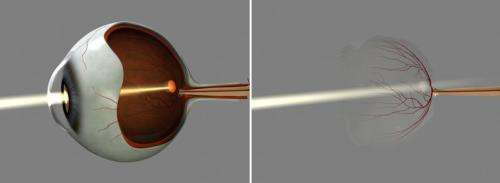New view of origins of eye diseases

Using new technology and new approaches, researchers at Lund University in Sweden hope to be able to explain why people suffer vision loss in eye diseases such as retinal detachment and glaucoma.
Research on diseases of the eye such as retinal detachment and glaucoma has until now focused on the biochemical process that takes place in the eye in connection with the diseases.
Fredrik Ghosh and Linnéa Taylor have concentrated instead on attempting to understand what happens on a biomechanical level in the diseases and have produced results that have drawn a lot of interest from experts.
"We have not previously understood the mechanisms behind glaucoma and retinal detachment, but we knew that these diseases had a strong mechanical component. Our findings could form an initial explanation as to why we develop these diseases", said eye researchers Fredrik Ghosh and Linnéa Taylor.
Using new technology, the eye researchers at the Department of Clinical Sciences in Lund, in collaboration with researchers at the Department of Biology at Lund University, have developed a method to investigate the importance of the biomechanical environment within the central nervous system.
For their studies, they grow retinal tissue from adult pigs in a stretched state similar to the normal mechanical state present in the living eye. Compared with unstretched tissue, which in cultures dies after a few days when the retina's mechanical balance is disturbed, studies can now be performed for up to ten days in retina with a well-preserved structure and significantly higher cell survival.
"This gives us new tools to understand in a more concrete manner how biomechanical factors in the central nervous system influence the health of cells when we are healthy and when we suffer from diseases. This will not only have major importance for our understanding of how diseases come about in the central nervous system, but also for future disease treatment", said the researchers.
The central nervous system, which includes the brain, spinal cord and retinas, is a complicated organ, especially in terms of structure. The entire system is under the mechanical influence of fluid pressure, among other factors. The new data from the group in Lund indicates that when the biomechanical balance is disturbed, as happens in retinal detachment and glaucoma, the normal function of the retina is lost, resulting in serious sight impairment or blindness.
More information: Stretch to See: Lateral Tension Strongly Determines Cell Survival in Long-Term Cultures of Adult Porcine Retina, Investigative Ophthalmology & Visual Science, March 2013. www.iovs.org/content/54/3/1845.abstract














